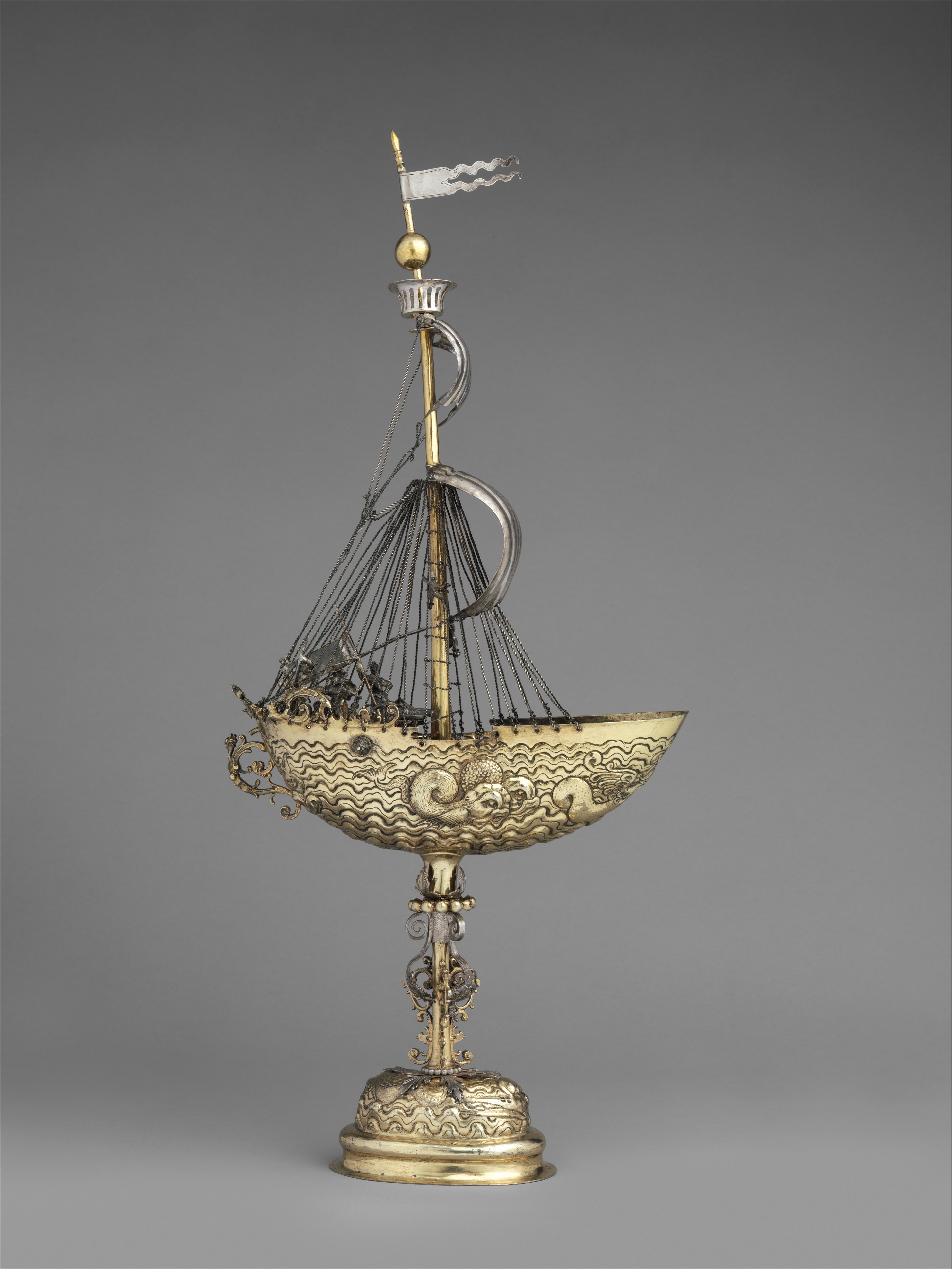Ship (Nef)
Called nefs in Old French, ceremonial centerpieces in the form of ships were developed in medieval France to mark a lord’s place at the table. In the German-speaking areas of continental Europe, variations doubling as drinking vessels (known as Schiffspokale) experienced a revival in popularity in the early seventeenth century. They were often used as wedding gifts to symbolize the couple’s safe journey through life. Zur Linden joined the Nuremberg goldsmiths’ guild as a master in 1609 and was the leading maker of inventive nefs like this one with its wondrous, embossed sea creatures amid the waves.
Due to rights restrictions, this image cannot be enlarged, viewed at full screen, or downloaded.
This artwork is meant to be viewed from right to left. Scroll left to view more.




